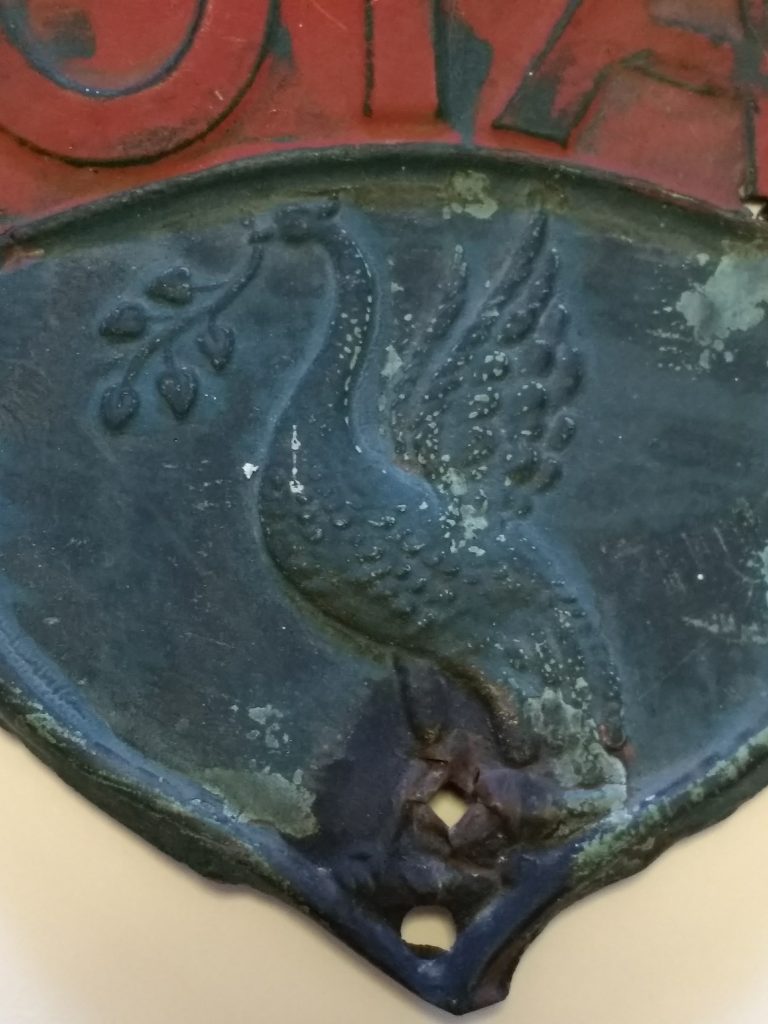Originally, not all houses were covered by fire insurance. To distinguish which properties had paid for fire insurance, a metal plaque was attached and displayed on the front of the building so that fire services knew which houses were insured by them that they should save.
Fire Marks and fire insurance as a concept emerged out of the Great Fire of London in 1666, due to the fact that no such cover existed then, and so property owners had to watch their buildings and businesses burn with no hope of recovering them.
Many organisations provided these fire marks, such as Royal and Royal Exchange. The one in the basement is a Royal one and there a Royal Exchange one recorded in the Billericay and its High Street book, with reference to its removal from “Bleak House” during a conversion (possibly 1922).
The book also refers to a ‘sun insurance sign’ being dated 11th September 1770 that is also in the Cater Museum. This fire mark was removed from Gatwick House – also referred as Mill Hill House.
The display of these fire marks originated in 1710 when the Sun Fire Office established them. The marks were initially used in England and later in North America and Australia.
For most of the 18th century, each insurance company maintained its own fire brigade, which extinguished fires in those buildings insured by the company and, in return for a fee to be paid later, in buildings insured by other companies. By 1825, fire marks served more as advertisements than as useful identifying marks; some insurance companies no longer issued fire marks, and those that did sometimes left them up after a policy had expired for advertisement purposes.
Earlier fire marks were made out of lead and often had a corresponding issue number with them. Later fire marks were referred to as fire plates as they were thinner, due to the metals they were made out of, such as copper plate or tinned sheet iron.
Fire marks could be found on all kinds of residences, from small cottages to mansions. However, they predominantly featured on smaller properties whose occupants had a greater dependency on insurance for economic safety. Most remaining fire marks are found in mansions and estate houses as these are less likely to be demolished due to historical or architectural significance.
Phoenix fire, Royal, Royal exchange and Sun were all fire insurance companies that had their own brigades and would assist any house using their insurance policy. Any that were not insured by them were left to the care of the local parish pump initially. In Billericay these companies cooperated, thereby covering most houses, something which would later develop throughout the country, especially in London. This ultimately resulted in the amalgamation of these services in 1941, creating the National Fire Service until 1947, where they came under county and local authority control.
Successive combinations of fire brigades led to virtually the entire city of London being put under the protection of the London Fire Engine Establishment, which fought not only the fires of policy holders but those of non-subscribers, the reason being that fires in uninsured buildings could rapidly spread to insured buildings.


